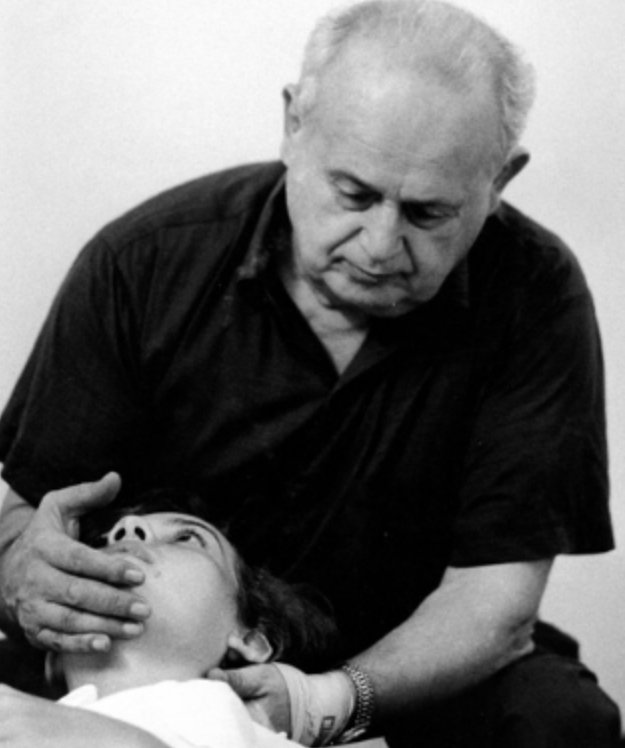A Brief history of Moshe FeldenkraiS
Born 1904, in Slavuta, (present day Ukraine). During the winter of 1918-1919 (age 14) he walked across Russia and Europe to Palestine.
He worked as a labourer until he improved his education enough to join the British Survey Office as a cartographer. He was an avid football player and also began his love of martial arts learning Jiu Jitsu.
In 1930 Moshe began studying engineering in Paris, gaining degrees in mechanical and electrical engineering. He part funded his studies by teaching Jiu Jitsu. He worked at the Radium institute under Frederic Joliot- Curie, finally achieving his doctorate from the Sorbonne.
His love for martial arts continued, publishing his first book on Jiu Jitsu and also founding the Jiu Jitsu Club of France.
He didn’t limit himself and studied under Kano Jigoro Shihan (widely attributed as the founder of Judo) eventually achieving 2nd Dan grading in Judo.
Forced to flee France in 1940, Moshe crossed the channel to the United Kingdom. His expertise was employed in sonar research at the facility in Fairlie, Scotland.
He aggravated an old footballing knee injury at this time, he was told he required an operation but he would never return to his beloved Judo. He refused the operation and was determined to find an alternative. Using his knowledge of physics, movement, engineering and anatomy he constructed sequences of movement which enabled him to restore his personal function.
He began teaching Judo to his colleagues. Moshe noticed some people were struggling with even the basic martial arts moves. He adapted his new movement sequences to aid his pupils. This was the beginning of the Feldenkrais Method.
He published his first book on the Feldenkrais method in 1949, titled “Body and Mature Behaviour”.
In 1951 he went to Israel and worked in the Department of Electronics before beginning to teach his method full time in 1954.
He was never ‘finished’ refining and honing his method. He continued to study diverse subjects such as anatomy, physiology, child development, movement, evolution, psychology, awareness practices and other somatic approaches.
Over the years he worked with (and taught Feldenkrais Method to) some notable names, Helen Keller (disability rights advocate and author), Peter Brook (theatre director and acting coach), Jonas Salk (physician), Margaret Mead (anthropologist), Karl Pribram (neuroscientist), Gregory Bateson (anthropologist), Yehudi Menuhin (violinist) and David Ben-Gurion ( first Prime Minister of Israel). Most famously teaching the latter to do a headstand, of which there is a statue at the Frishman Beach, Tel-Aviv.
He worked continuously on his method; teaching and training across Israel, Europe and the United States, and publishing books until his death in 1984.
Books in English by moshe feldenkrais
Hadaka-Jime: the core technique
Body and Mature Behaviour
Higher Judo Groundwork
The Elusive Obvious
The Potent Self
Body Awarness as Healing Therapy: The Case of Nora
Embodied Wisdom: collected papers of Moshe Feldenkrais
Awareness Through Movement
The Master Moves
The Feldenkrais Method: teaching by handling

“Make the impossible possible,
the possible easy,
and the easy elegant.”
Moshe Feldenkrais